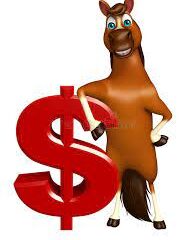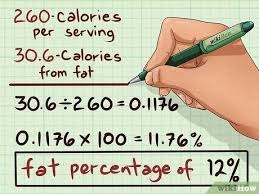Feed Tag Dressing

We put dressing on a salad to make it taste better because raw leaf vegetables aren’t terribly palatable to many people.
Some of us use so much dressing that we’ve defeated the purpose of eating the salad.
As you know feed tags are a legal document required by most stated agricultural agencies to be attached to bags of livestock feed. These tags have a set format and are designed to disclose what is in the feed, the use of the feed and the anticipated performance of the feed.
Many times, especially with horse feeds, the producer will add a whole bunch of stuff that isn’t really needed or has nothing to offer to our horse in order to make people comparing tags believe that they are getting a better deal than the competition is offering.
This practice is known as “tag dressing” in the industry.
What Does Tag Dressing Look like?
AAFCO provides a list of 13 essential nutrients that must be expressed on the feed tag. These essential nutrients are listed in a specific order on the tag and include protein, fat, fiber, ADF, NDF, and micro minerals.
AAFCO provides an expanded list of optional nutrients with clear details on how and where those nutrients should appear on the feed tag.
Some of these nutrients must be expressed as maximum others as minimum, some as parts per million or mg or IU depending on the nutrient.
Most times tag dressing nutrients are listed at the bottom of the tag. If these nutrients are not covered by AAFCO a producer will place them far enough away from the guaranteed analysis to be legal but close enough to be misleading.
Other times tag dressing is hiding in plain sight by including a high amount of micro minerals that are cheap but when someone is comparing a feed tag line for line the tag dressing will make that producer’s feed look better than a competitor.
Some producers include long lists of ingredients to give the impression that the feed is highly fortified but many of the important ingredients aren’t listed on the guaranteed analysis which means that although they may be in the feed they aren’t included in sufficient quantity to make a difference.
The guaranteed analysis guarantees that if the feed is tested the lab will find the amount of the ingredient listed on the GA. Because there is Lysine listed in the ingredients means nothing unless the minimum guaranteed level appears on the guaranteed analysis.
Is Tag Dressing Harmful for Horses?
Tag Dressing isn’t typically harmful to horses in the sense that all the extra stuff will cause problems for your horse.
There are some minerals, like selenium, that can have serious consequences for your horse but for the most part tag dressing is harmless…or is it?
The real harm in adding all this “harmless” tag dressing is that most times your horse is being cheated out of important nutrition because the feed is full of useless ingredients.
Advantage Edge, Thrive Feeds, Total Equine are three feeds that I can think of containing all kinds of amazing ingredients but not any measurable amount of L-lysine, the single most critical amino acid for horses.
Most of the really egregious tag dressing offenders are second and third tier regional or local mills trying to compete with the larger producers. “We have even more stuff AND we’re a lower cost!”.
A few of the major feed companies have some level of tag dressing, typically pre and probiotics. This really isn’t a big deal. Probiotics don’t really help a healthy horse stay healthy but a scoop of brewer’s yeast added to a bag of feed isn’t going to do any physical harm.
On the other hand, if your horse would benefit from drug therapy or other treatment and you are counting on the supplements in the feed to help now that feed becomes a problem.
How about your budget? If you are spending more on a feed because it has all this “extra stuff” in it isn’t that placing an additional burden on your resources.
Here’s One Example
Before I continue I have to put out my conditional statement and disclaimer because I’m going to use a Triple Crown feed as an example.
Triple Crown is a premium feed that performs well and should be considered a quality product so I’m in no way suggesting that it is an inferior product.
I do believe that of all the major feed companies Triple Crown is the most guilty of over marketing their feeds and getting a price premium from consumers.
The following is an example of how it is done and was brought to my attention in a conversation in my Facebook group.
The claim is that Triple Crown 30% Balancer is a better value than Purina’s Enrich Plus balancer because it is “more fortified”.
Below is a comparison of the two feeds and you will note that the Triple Crown feed is in fact more “fortified” than the Purina product. More is better!
Two things…
First, with horses more isn’t always better. For some reason Triple Crown has an affinity for Selenium since all their feeds contain higher levels of selenium than competitors and the balancer is no exception. Since most of the US is highly deficient in selenium this shouldn’t present a problem but it is odd.
Second, as you can see when including the average nutrient values for grass hay Enrich provides more than adequate quantities of essential nutrients to exceed the NRC daily requirements.
| Enrich | Yield/LB | TC 30 | Yield/lb | NRC | Grass Hay | |
| Protein | 32% | 145 g | 30% | 136 g | 630 g | 1,100 g |
| Lysine | 2.75% | 12.5g | 2% | 9 g | 27 g | 22 g |
| Calcium Min | 3.25% | 14.75 g | 4% | 18.6 g | 20 g | 47.2 g |
| Calcium Max | 4.25% | 19.3 g | 5% | 22.7 g | ||
| Phosphorus | 1.60% | 7.26 g | 1.50% | 6.81 g | 14g | 24.2 g |
| Postassium | 1.50% | 6.81 g | 1.40% | 6.36 g | 25 g | 18.5 g |
| Copper | 185 ppm | 84 mg | 295 ppm | 134 mg | 100 mg | 81 mg |
| Selenium | 2 ppm | .9 mg | 3.4 ppm | 1.54 mg | 1 mg | 1.21 mg |
| Zinc | 500 ppm | 227 mg | 940 ppm | 427 mg | 400 mg | 302 mg |
| Vitamin A | 18,000 IU/lb | 18,000 IU | 36,000 IU/lb | 36,000 IU | 15,000 IU | 20,000 IU* |
| Vitamin D | 2,500 IU/lb | 2,500 IU | 6,000 IU/lb | 6,000 IU | 3,300 IU | 20,000 IU** |
| Vitamin E | 600 IU/lb | 600 IU | 1,000 IU/lb | 1000 IU | 500 IU | 800 IU |
Please note * Hay contains on average 20,000 IU of Vitamin A when it is first cut. It can lose as much as 90% of it’s vitamin A over a year in storage.
Hay will actually increase in Vitamin D the longer it is exposed to sunlight.
The Triple Crown balancer boasts a bunch of probiotics and some additional minerals along with biotin which is simply Vitamin B7 and horses synthesize B7 if they are getting enough hay. The most important supplement for healthy hooves are high quality protein and Lysine.
So is Triple Crown Balancer a Better Value than Enrich?
No, it’s not.
The Triple Crown rep will tell you that you would have to feed more of the Enrich balancer to provide the same level of nutrition as the Triple Crown balancer and while this is true as you can see from the chart above there is no need for the additional nutrition since the hay your horse receives is providing a substantial amount of nutrition.
In fact, I could argue that the opposite is true. By stuffing the product with so many “fluffy” ingredients you would have to feed more of the TC to compete with the protein and lysine in the Enrich. Of course, it would be splitting hairs but turnabout is fair play, no?
A balancer is meant to “balance” the nutrients not available in hay and it has to do it along a broad spectrum of hay types and qualities which is why the nutrient levels in each product are higher than what’s required to balance “average” hay values.
Both products meet or exceed the dietary requirements of a horse when fed at a rate of 1 pound per day for a 1,000 pound horse at maintenance. The fact that the Triple Crown balancer offers “more stuff” is irrelevant since any nutrients offered above the requirements are dumped overboard as waste.
As I mentioned at the top of this section the Triple Crown balancer is a solid product that offers good performance. However, if the price of the Triple Crown product is more costly than the Purina balancer there is no value for choosing the Triple Crown over any other quality balancer.

